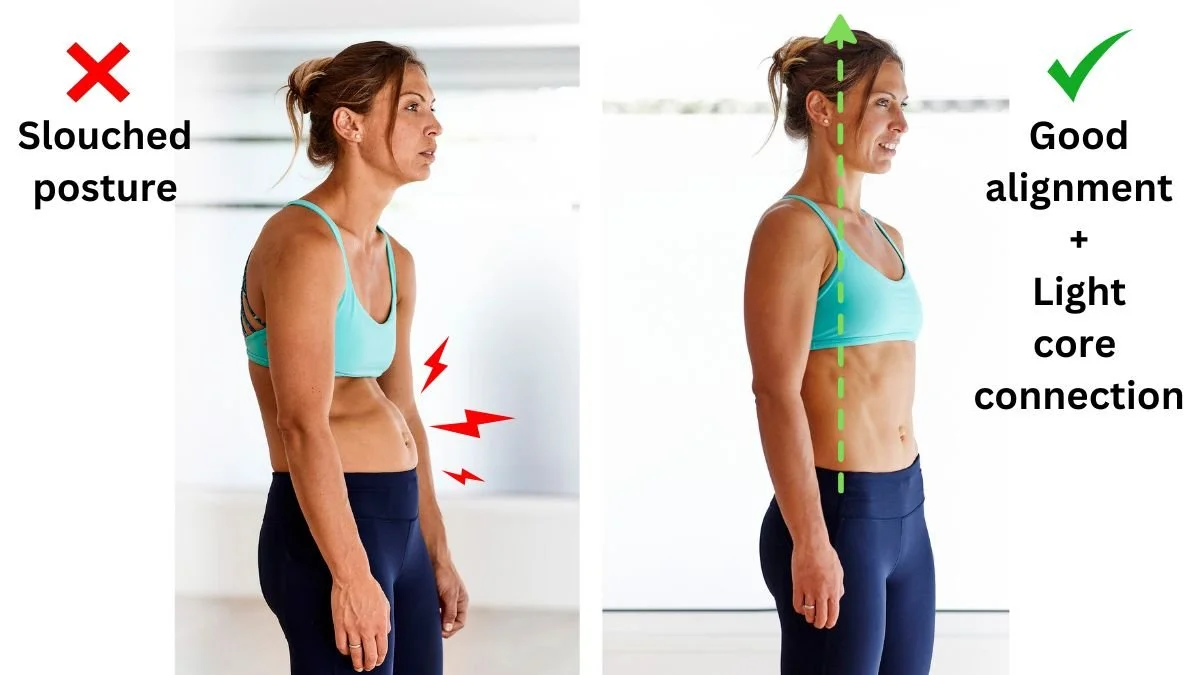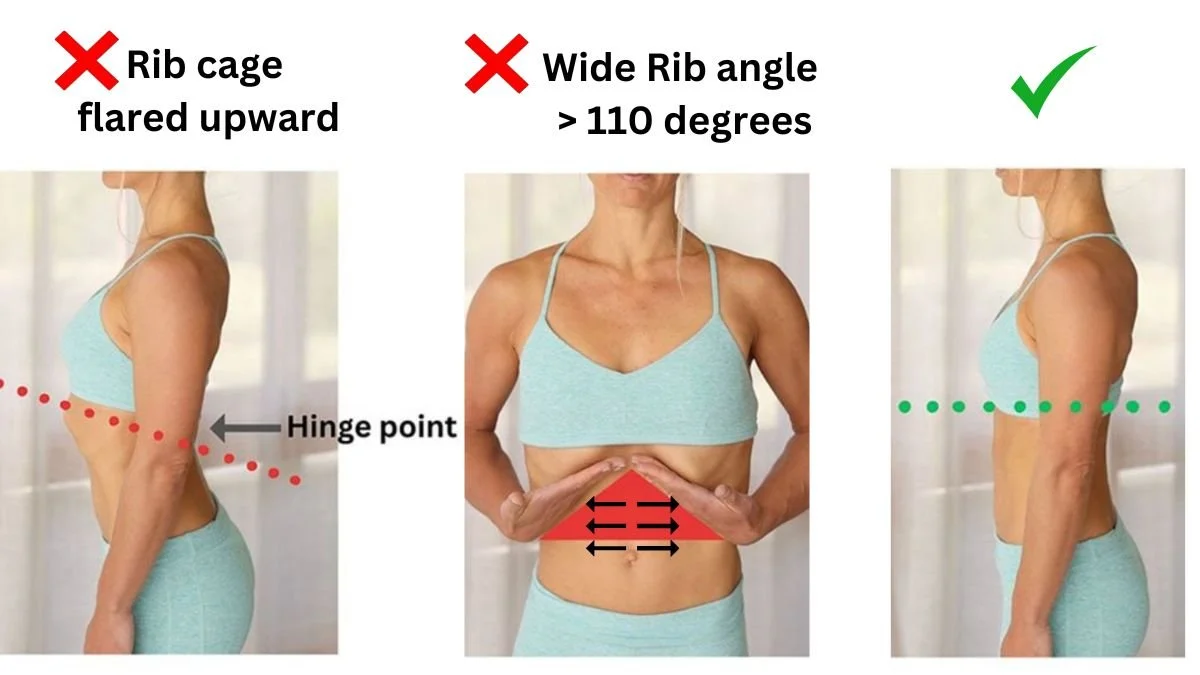Healing Diastasis Recti (DR) can feel frustratingly slow. Despite your best efforts, it might seem like your core just isn’t getting the memo… This is incredibly common.
Many of my clients came to me because they felt stuck in their recovery — they were doing everything they thought they should, but their body just wasn’t responding the way they hoped… until they realized what was holding them back!
Let’s explore 6 reasons that may be slowing down or preventing Diastasis Recti from healing.
What Can Prevent A Diastasis Recti from Healing
The goal of this blog post is to guide you in becoming more aware of the factors that could be affecting your progress.
You’ll find simple illustrations below this section to help you visualize how these elements can influence your recovery.
By identifying these potential roadblocks, you can start to approach your recovery with more clarity and patience, knowing that each small step forward is part of the process - one piece of the puzzle.
-
Poor posture, such as rounded shoulders or a slouched upper back, can significantly impact your ability to heal diastasis recti.
When your shoulders are hunched forward and your upper back is rounded, it alters the alignment of your ribcage and pelvis. This misalignment increases pressure on your abdominal wall and places unnecessary strain on the connective tissue of your linea alba, preventing it from healing effectively.
Rounded shoulders also disrupt the natural tension and support system of your core. With the ribcage tilted forward and the diaphragm compressed, the deep core muscles and pelvic floor can’t engage properly. This can create a cycle of instability, where the abdominal muscles fail to work together as a cohesive unit, further delaying recovery.
→ Addressing posture via body awareness, strength and mobility exercises is essential
-
During pregnancy, the growing belly can push the ribcage outward, and without corrective work postpartum, this misalignment can persist.
When your ribcage flares wide - often seen as the lower ribs protruding outward - it creates an imbalance in your core system because your abs are attached to your ribs. If your rib cage flares wide, then it constantly pulls your abs apart.
Rib flare also disrupts the connection between the diaphragm and pelvic floor, leading to uneven pressure distribution across the core. This mismanagement of pressure further delays the healing of diastasis recti.
→ Addressing body alignment, breathing pattern, core strength, and back body expansion is essential.
-
Breathing patterns affect core pressure and function.
If your chest and shoulders rise when you inhale then there’s a good chance that you’re shallow breathing. When you rely on chest breathing, your core muscles - including the deep abdominals and pelvic floor - aren't fully participating in the natural rhythm of inhalation and exhalation. Shallow breathing further destabilizes your core.
If you breathe solely in your belly, then you are belly breathing. This can create excessive outward pressure on the abdominal wall. Belly breathing can strain your ab midline (the linea alba) and slow the healing of diastasis recti.
→ For optimal core function, your breathing should involve a balanced expansion of the ribcage, belly, and back, allowing pressure to distribute evenly across your core (360-degree breathing). Re-learning how to breathe diaphragmatically is key. We do so by improving rib cage mobility, breathing and alignment awareness.
-
If your abs push out during core exercises, physical activities like lifting, or even when coughing or sneezing, you’re not engaging your core properly.
This outward pushing creates excess intra-abdominal pressure, placing strain on the linea alba, the connective tissue that holds your abdominal muscles together. Instead of allowing your core to stabilize and distribute pressure evenly, this pattern forces the muscles apart and stresses the midline.
Over time, this breathing and pressure management strategy not only aggravates diastasis recti but also reinforces the "pooched" appearance of your belly. In more severe cases, it can contribute to pelvic organ prolapse, lower back pain, and a loss of functional core strength.
→ Re-learning how to engage your core properly by using your breath and re-coordinating all the core elements is critical. It will help you protect and heal your core when exercising or simply moving in daily life!
-
Bloating and digestive discomfort don’t just make you feel uncomfortable - they can directly impact your core's ability to heal.
When your abdominal cavity is swollen from bloating, it creates excess intra-abdominal pressure. This increased strain can stretch the linea alba, slowing or even reversing progress in healing diastasis recti.
Also, chronic digestive issues, like constipation, compound the problem. Straining during bowel movements creates a repetitive bearing-down effect, similar to what happens when you hold your breath and push outward with your abs.
Over time, bloating and constipation not only stress your abdominal wall but can also contribute to pelvic floor dysfunction, such as weakening the pelvic floor muscles or worsening symptoms of prolapse.
→ Small and easy steps can help you reduce bloating and manage constipation. It often includes habit changes in nutrition, posture, breathing, and even clothing.
-
In some cases, the connective tissue of the linea alba becomes so severely stretched that full healing may not be possible. This occurs when the tissue loses its elasticity and resilience—qualities essential for drawing the abdominal muscles back together and supporting core strength.
In addition to genetic factors, this issue is more common in mothers who have experienced multiple pregnancies, particularly when they occur close together, as the tissue often doesn’t have sufficient time to recover fully. Petite women carrying larger babies face heightened pressure on the abdominal wall, sometimes resulting in prolonged strain and more extensive damage to the connective tissue.
When the linea alba is stretched beyond its capacity, it often results in a thin, weakened connective tissue that struggles to generate tension. This limits the core's ability to regain full functionality, leaving some women with ongoing challenges, such as a "pooched" belly appearance and back pain.
While surgery - such as abdominoplasty - may be an option for extreme cases, it is rarely needed. Even in severe cases, the vast majority of mothers can achieve significant improvements in core function and abdominal appearance naturally.
→ A comprehensive approach is key to putting the best chance of healing on your side. This includes core rehab exercises, progressively ramping up the load on your core muscles to challenge the tissues, but also nourishing foods, better alignment, better breathing patterns at rest, stress level management, and consistency!
6 Reasons - Illustrated
#1. Rounded shoulders can prevent your Diastasis Recti from healing
#2. Rib flare can prevent your Diastasis Recti from healing
#3. Poor breathing pattern at rest can prevent your Diastasis Recti from healing
#4. Bearing down or pushing your abs out can prevent your Diastasis from healing
#5. Bloating and constipation can prevent your Diastasis Recti from healing
#6. Connective tissue damaged beyond repair prevents your Diastasis Recti from healing
Healing is a Journey
While it can be disheartening to feel stuck in your diastasis recti recovery, the good news is that small, consistent changes can make a big difference!
By addressing posture, breathing, intra-abdominal pressure management, and connective tissue health, you’ll give your core the best chance to recover.
Don’t hesitate to reach out for guidance. My Better Body After Baby Bundle is here to help you rebuild a stronger, more functional core!







